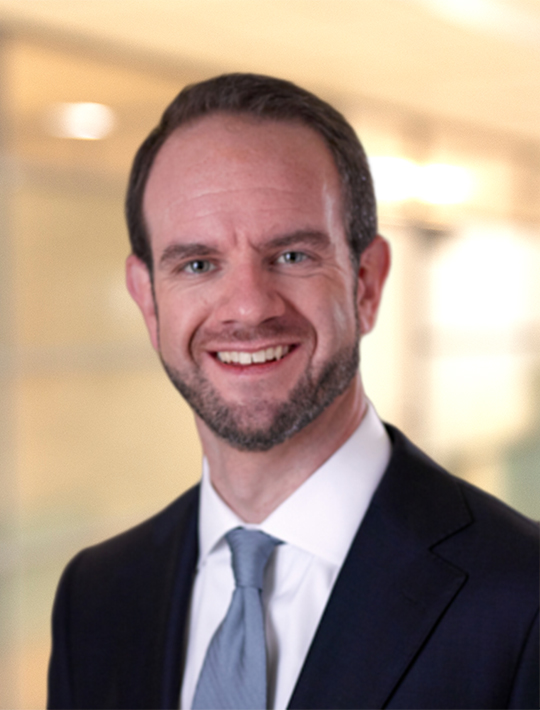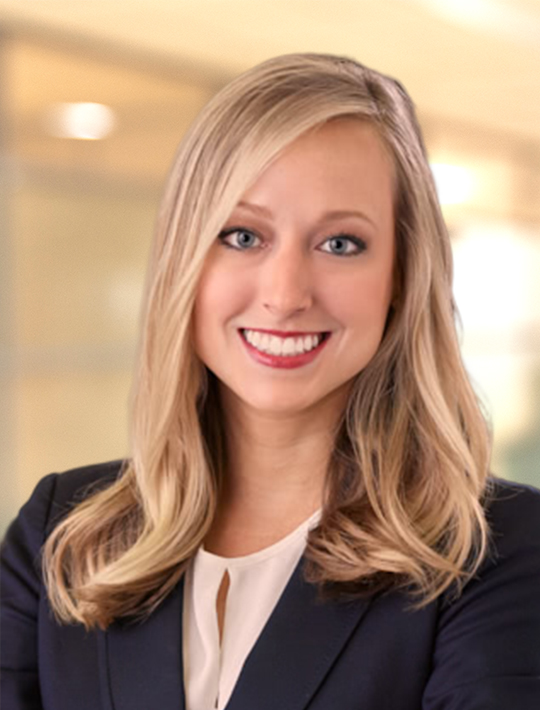On May 14, attorneys from Stoll Keenon Ogden (SKO) presented a nationally available webinar, “Helping Small Businesses and Small Firms Respond to the COVID-19 Pandemic,” produced by CT Corporation. After registering online, you may view the webinar in its entirety online.
During the program, the SKO presenters responded to the following questions from the webinar participants. We’re sharing our responses because they, along with the questions asked, may be typical of the concerns of many closely-held businesses.
Please note that new developments emerged after this program, including the release of the PPP Loan Forgiveness Application and follow-on interim regulations on the same topic.
Question: Do U.S. companies with only foreign owners qualify for any of the federal Small Business Administration (SBA) COVID-19 plans?
Answer: Who can apply for each program is dependent on the rules of the specific program.
Question: When does a business have to apply to the lender for Paycheck Protection Program (PPP) loan forgiveness?
Answer: The application for forgiveness will be made after the eight-week covered period is completed. The borrower will apply to the Lender for forgiveness. Borrower should coordinate as to what the Lender is going to want in the way of the application form and the manner in which supporting documents should be submitted.
UPDATE: On Friday, May 15, the federal Treasury Department and the SBA released the Forgiveness Application form and instructions. Reference should be made to that publication.
Question: Is there any chance the eight-week period start date will change? Many clients applied for loan because afraid funds would run out but can’t open yet?
Answer: Many have suggested that the covered period should not start on the day the loan is disbursed. I’ve not seen any indication that there is movement to make a change. The “covered period” is part of the CARES Act, so presumably it cannot be altered (or much altered) by regulation.
UPDATE: On Friday, May 15, the Treasury and SBA released the Forgiveness Application form and instructions. Under that application, borrowers have the flexibility to use a covered period that commences with the payroll period commencing next after receipt of the loan proceeds.
Question: We cannot find any concrete answers on if it is accrued and paid during the eight-week period or accrued but paid possibly outside of the eight-week period. Will the difference depend on whether we need to run an early payroll, pay rent early, etc.?
Answer: I discuss that point in a short article on forgiveness in the materials book; it may be the first item after the biographies of the presenters. I suggest, being cautious, that you determine on a per day basis rather than a pay period. The AICPA has requested that the guidance be modified to shift to a pay-period analysis, which tell me that per-day is the way to go under the rules as they exist currently.
All that said, I can’t point you to an FAQ or a proposed regulation that dictates that answer.
UPDATE: On Friday, May 15, the Treasury and SBA released the Forgiveness Application form and instructions. Under that application, borrowers have the flexibility to use a covered period that commences with the payroll period commencing next after receipt of the loan proceeds.
Question: Is the employer portion of FICA forgivable?
Answer: No. The Employer portion of FICA may not be paid with PPP loan proceeds.
Question: What about owner distributions? With PPP can you do owner distributions? Would that be considered as part of payroll if you are an LLC filing as a S-Corp.?
Answer: Owner distributions (i.e., “salary”) in an S-Corp. are still W-2 and can be paid with PPP loan proceeds.
In an S-Corp., a PPP loan can be used for owner W-2 wages. It cannot be used for “distributions” (i.e., dividends).
In a partnership/LLC taxed as a partnership, partner distributions (capped at $100 k per year) may be paid with PPP Loan proceeds. Also, if your PPP loan did not include those distributions in determining the loan base, guidance released on May 13 allows borrowers to go back and supplement the loan application, then receive an additional disbursement to account for that adjustment.
UPDATE: On Friday, May 15, the Treasury and SBA released the Forgiveness Application form and instructions. That application treats as a special category owner compensation, and it should be carefully reviewed as to your question.
Question: Who actually authorizes forgiveness? The issuing bank or the SBA?
Answer: The lender bank is charged to make the forgiveness determination. We have not seen guidance from the SBA/Treasury as to what the bank should be looking for in the way of back-up to a loan forgiveness application.
UPDATE: On Friday, May 15, the Treasury and SBA released the Forgiveness Application form and instructions.
Question: What are the two “Employee Limits” under the new guidance for forgiveness?
Answer: They are tied to reductions in the number of employees and changes in total compensation. In the materials book there is an article on seeking forgiveness that describes the tests and provides an example as to how (at least I think) they are to be applied.
UPDATE: On Friday, May 15, the Treasury and SBA released the Forgiveness Application form and instructions. They address how the two limitations are applied.
Question: If a company received just over $2M, is it possible to repay an amount to bring it under the $2M?
Answer: That is not addressed in the guidance. I would have some concern that if a borrower returned a portion of the loan to get to below $2 million, that might indicate that that borrower did not have a good faith basis for applying for the original amount in the first place.
Question: Is foreign ownership a problem for Main Street Loans?
Answer: Main Street Loans rely upon the SBA’s eligibility rules including the affiliate rules. All are available on the SBA website.
Question: Are there HIPPA issues involved with asking if someone is high risk?
Answer: No, HIPAA does not apply to employers vis-a-vis their employees. The ADA’s confidentiality provisions do not apply to voluntary disclosures, and especially in light of the employer’s efforts/obligations to stop the spread of an infection disease like COVID-19.
Question: Can you legally ask an employee if they are in a sensitive population group?
Answer: Yes, you can invite employees to voluntarily self-disclose. HIPAA does not apply to employers vis-a-vis their employees. The ADA’s confidentiality provisions do not apply to voluntary disclosures, and especially in light of the employer’s efforts/obligations to stop the spread of an infection disease like COVID-19.
Question: Does the CARES Act require that the borrower apply for forgiveness within a particular time frame?
Answer: CARES does not include an outer time limit for when the application for forgiveness must be filed. I would not be surprised if individual lenders either ask or require that applications be filed within some time period after the end of the eight-week covered period.
UPDATE: On Friday, May 15, the Treasury and SBA released the Forgiveness Application form and instructions.
Question: How does one question people who have underlying medical conditions while respecting individual HIPPA privacy protections?
Answer: HIPAA does not apply to employers vis-a-vis their employees. The ADA’s confidentiality provisions do not apply to voluntary disclosures, and especially in light of the employer’s efforts/obligations to stop the spread of an infection disease like COVID-19. I would send an all-employee communication that simply invites employees to voluntarily and confidentially, send an email, etc. to HR (or a similar function) to disclose their situation. I would not require the employees to specifically identify the medical condition – only that they have one.
Question: If an employee already had 12 weeks of regular FMLA in 2020 would they be able to take another 12 weeks under E-FMLA? I would understand that we would paid for the two weeks sick time, but don’t think that they could be entitled to the other.
Answer: No, not as the law is currently drafted. The FFCRA’s 12 weeks of COVID-19 E-FMLA leave is not in addition to the FMLA’s standard entitlement of 12 weeks’ leave in a 12-month period. However, the HEROES Act passed earlier this week by the House of Representatives would change this and make the E-FMLA and FMLA two separate 12-week entitlements. It’s anyone’s guess as to whether the HEROES Act will become law as passed by the House.
Question: Can we use FFCRA-A Paid Sick Leave and E-FMLA during PPP loan’s eight-week period? Will FFCRA-A affect PPP loan forgiveness?
Answer: Permitting employees to use FFCRA EPSL/EMLA leave should not affect forgiveness; but note you cannot “double dip” and take both the payroll tax credit for the FFCRA paid sick leave AND forgiveness for those payroll expenses under PPP.
Question: Do you have guidance for how to apply the less-than-500 mandatory sick leave and FMLA for the tax credits? Is that on the quarterly 941?
Answer: Recently the IRS modified the 941 to address employee retention tax credit. Frankly I have not yet tried to digest the changes. I suggest checking with your CPA and your payroll service provider.
Question: How do we provide a place for the employees to eat or take breaks in a manufacturing environment?
Answer: I’d first check w/any state orders, but consider (1) creating “shifts” where small groups of employees can cycle in and out of the breakroom; or (2) have an outside/tent break area that will allow workers to separate
Question: Do you have a sample waiver?
Answer: I believe there is sample language in the materials book.
Question: Are the PPP loans available to solo practitioners, where the only eligible costs would be rent, utilities and payment to the owner? One of the questions on the application suggests that self-employed solos are not eligible.
Answer: That was an early confusion, but now it is clear that a sole-proprietor may apply for a PPP covering compensation (up to annualized cap of $100,000).
Question: Have you seen anyone claim for office rent paid out on a shelter in place when the landlord won’t give you a break on rent?
Answer: With apologies, we were not following your question. Some landlords are insisting that tenants continue to pay the contractually agreed upon rent; some are working with tenants to alter contractual payments terms. Tenants are citing force majeure clauses in the lease as an excuse for non-payment. Absent a force majeure clause in their favor, tenants will typically assert other defense theories, such as frustration of purpose, impossibility, and impracticability. There is no doubt going to be significant litigation over these and related fact patterns and/or theories of excuse of the obligation to pay. Often the outcome will be dependent upon the particular state law as to contract interpretation and perhaps as well the law of that state as to states of emergency and the wording of a particular governor’s emergency declaration.
Question: Can you still have a lunch room in an office building?
Answer: Subject to any state/local orders, yes, but you may have to limit the number of people who can be in the room at any one time, and/or create new “lunch shifts” to be sure social distancing guidelines can be followed. Most states are prohibiting “shared” food and drink (coffee pots, catered lunches, etc.) for the time being.
****
Stoll Keenon Ogden understands that these are trying times for our clients and our country. Our firm operations have continued uninterrupted and our attorneys are equipped to serve as we always have – for more than 120 years.
Please also be sure to consult the Stoll Keenon Ogden Coronavirus Resource webpage for additional articles and information related to the latest information on new laws and directives enacted by federal, state, and local governments in response to the Coronavirus pandemic.


